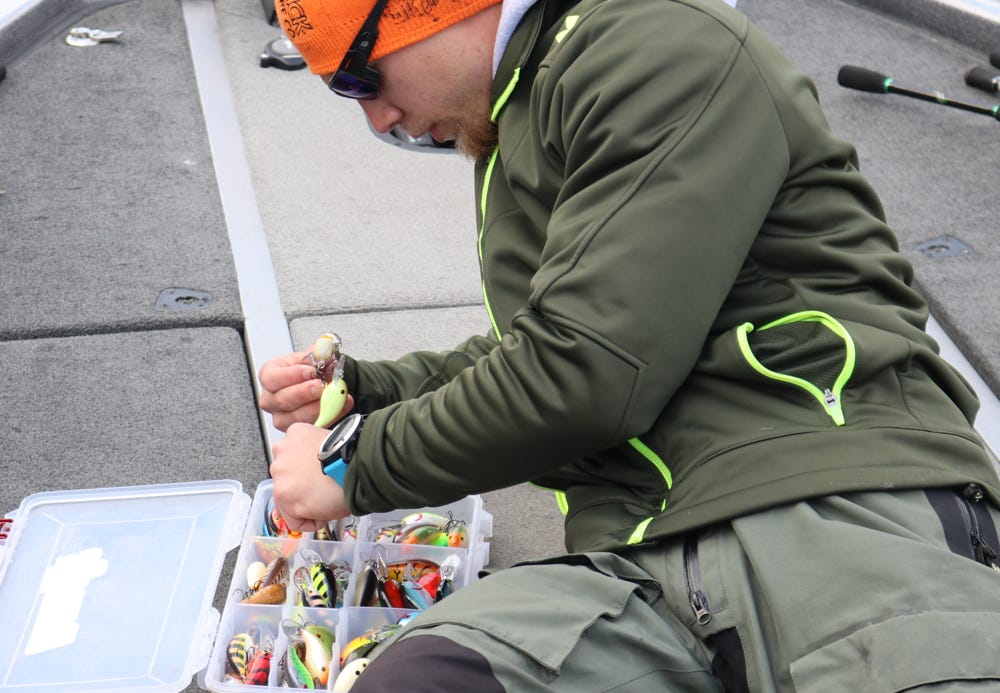- Feb 15, 2021
Sure-Fire Crankbait Tactics for Early Spring Bass Fishing
Learn the secret to catching pre-spawn bass in a broad range of situations.
Early spring can be a daunting time to catch a good limit of bass, but not if you implore the Bandit “system” of crankbaits to probe each section of the water column. The system I speak of is the Bandit 100, 200, and 300 Series crankbaits, which dive anywhere from 2 feet deep all the way out to 12 feet. By having all these models tied on, you have a sure-fire system to find bass in many different pre spawn zones.
In the article below we will go through the three major scenarios/water depths to target for early spring bass fishing so you’re completely in the know the next time you’re on the water.
Shallow Water Cranking – 2-5 Feet


In some cases, shallow water cranking can be hot in early spring, with heavy rains and slight temperature increases. These situations send bass shallow in search of spawning grounds or to feed on crawdads. I always start by looking in this zone with a Bandit 100, which is the shallowest running model in the line with a handy square lip that deflects nicely off cover.
When fishing in this water depth be sure to work the 100 almost like a spinnerbait by running it over every piece of cover near the bank because bass will push tightly against shallow cover.
During my latest trip to a highland reservoir in central Arkansas I found bass hanging out extremely shallow in wind-blown pockets with shallow brush piles. I chose a Bandit 100 in Spring Craw Yellow and quickly crawled it over the piles for some great reaction bites.
Wind plays heavily in a shallow water pattern, same with abundant cover near the bank, so keep that in mind when eyeing good places to start fishing.
Colors: Brown Craw Chartreuse, Red Crawfish, Malfunction
Mid-Depth – 5-8 Feet


Mid-depth fishing is a pretty obscure place because it’s neither shallow nor deep, but I suppose that’s based on who you ask. This depth is very prevalent with pre-spawn cranking though, because this is a zone that big bass inhabit while waiting to move up to spawn or when they are moving shallower to feed on a warm day.
There is no better crankbait to probe this zone than a Bandit 200. It’s simply the best due to its small size and ability to reach nearly nine feet deep on a single cast! This little crankbait is a workhorse at this depth with its ability to dive through cover such as wood, rock, or docks.
Identifying this zone of water is just as simple as backing out off the shallow banks mentioned in the previous paragraph. The key is to be sitting in at least 8 feet of water and casting toward shallower water so the crankbait can cascade down and ricochet off whatever cover is present nearby.
I also targeted this depth on my most recent outing by backing off shallow banks about 50 yards and casting straight away repeatedly. I found some better fish with this technique as the day went on because I came across slightly deeper cover that other anglers hadn’t fished yet. This depth can also mean cranking down the sides of bluff walls or steep rocky banks with a 200.
This pattern works extremely well on cold sunny days. The major key with this depth is to fish it, don’t just bypass it to fish shallow or deep!
Colors: Brown Craw Orange Belly, Spring Craw Yellow, Silver Minnow Sparkle
Deeper Water – 8-12 Feet


This so called “deeper zone” might not seem deep to some anglers, but in the context of early spring bass fishing it is certainly deep. The best choice for this section of water is the Bandit 300, which is the deepest running model in the Bandit crankbait line and runs to 12 or 13 feet deep on a long cast.
When targeting this depth zone in early spring, you want to look at some familiar targets like tapering points, humps, and creek channel bends. These prime locations hold bass year-round, but in the early spring they serve as place holders for bass in deeper water. By place holder I mean somewhere that bass can remain lethargic and suspend as they commonly do in the coldest parts of the year.
To attack these areas with the Bandit 300 you must position where you can cast far enough to reach the cover or depth on the point. I like to find the cover holding fish, toss out a Lindy marker buoy and then back off to make my cast and run the bait down the cover.
Oddly enough, though, the Bandit 300 doesn’t always have to be bumping cover to catch fish because its tight shimmy tends to draw bites even when swam through a school of suspended fish. This is a technique not many implore in deep water, but if you see fish on the graph suspended 8-12 feet deep you can run a 300 through them for some awesome reaction bites!
Colors: Pearl Splatterback, Red Crawdad, Red Spring Craw
All three of these depth zones can be dominated with the right crankbaits like the Bandit “system” I have described here. This a daunting technique, though, that requires a lot of chunking and winding so be sure you stay focused and ready because at any moment the bass of a lifetime could be on the receiving end!




